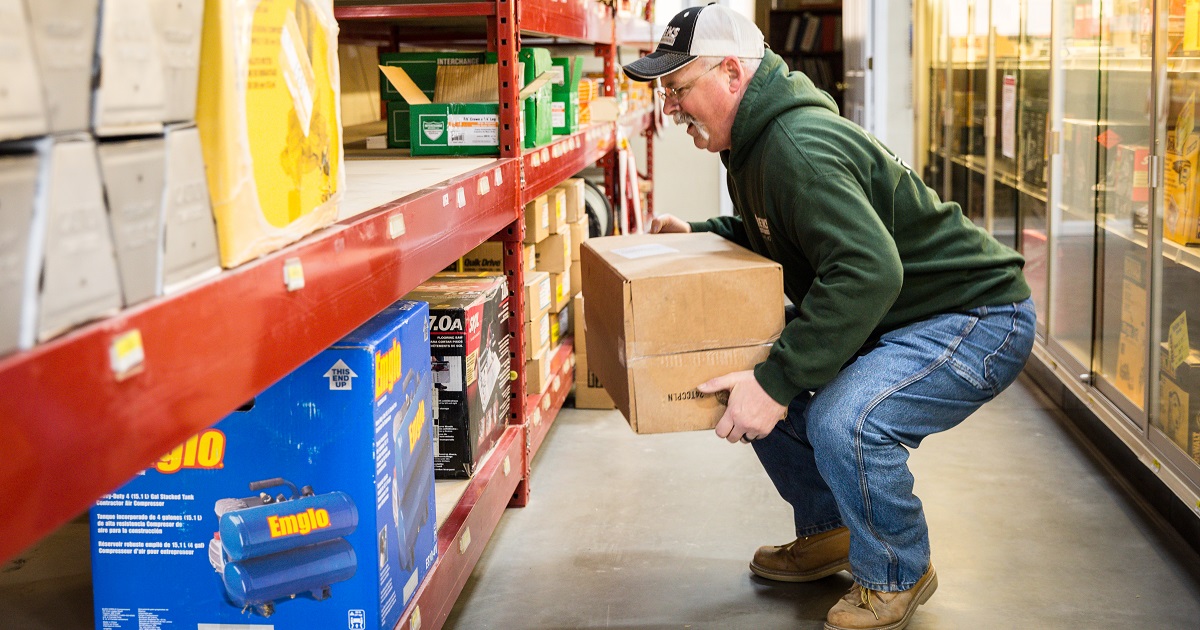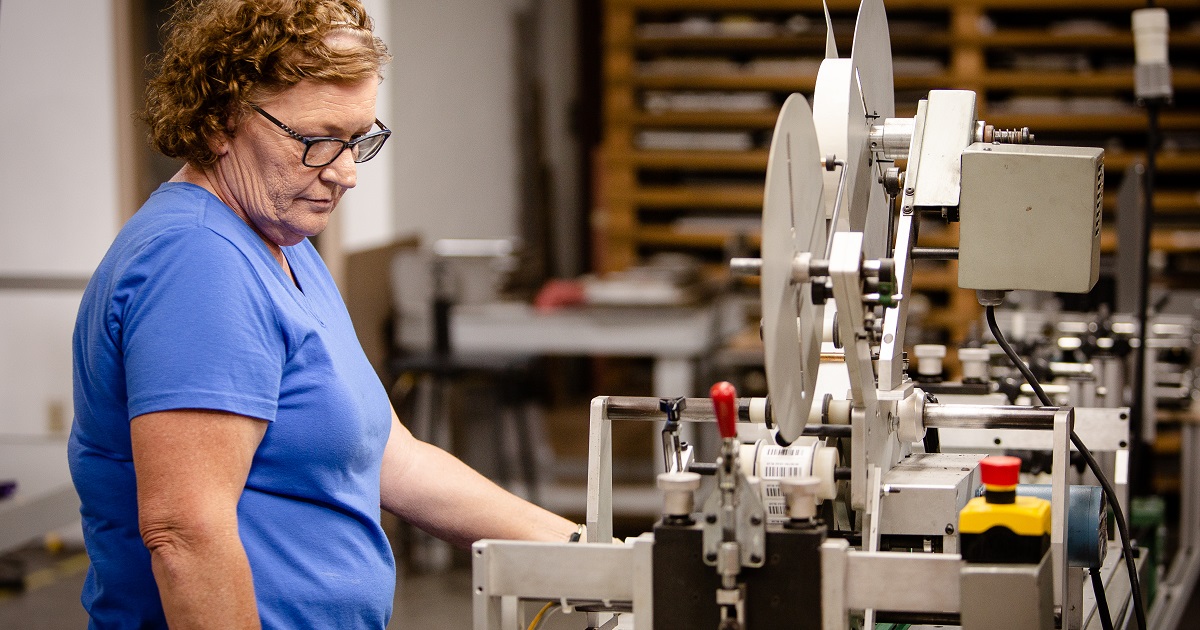Senior workers are a part of every generation’s workforce. Studies show that nearly 25% of our workforce is over the age of 55. Older workers have a large amount of knowledge. Their experience is valuable in every industry. However, as our bodies change, so do risk factors for work-related injuries. What does an aging workforce mean for employers? How can they look out for their long-term employees?
On this episode of the WorkSAFE Podcast, we invite a workplace expert to join us. Kevin Lombardo is the President and CEO of Dorn Companies. His organization focuses on wellness and pain management. Their goal is to keep people out of the healthcare system with innovative solutions.

First, we’ll talk about why the aging workforce poses safety risks. Then, we’ll share the common risks older workers face. Finally, we’ll discuss strategies for employers to keep employees of all ages safe.
Listen to this episode on the WorkSAFE Podcast, or read the show notes below.
Why does the aging workforce pose a threat to workplace safety?
Every workforce is created with employees of all ages. Lombardo first became interested in the aging workforce in 2011. He saw how three – and sometimes four – generations worked together in the same companies.
The aging workforce presents unique challenges. Known as Baby Boomers, their knowledge and skill are hard to replace. However, strength and flexibility decrease as you age. Older workers may start to experience more aches and pains. They may also become fatigued more quickly. As a result, injuries happen more often. They are also more severe.
Repetitive work presents a risk
Doing the same tasks over and over can strain the body of any worker. But in older employees, these strains lead to more severe injuries. Musculoskeletal disorders are some of the most common consequences.
Lombardo has seen how age affects those in repetitive roles. He worked with baggage handlers at a popular airline. 70% of injuries were caused by doing the same motions every day – lifting, stretching, throwing. But younger workers were more likely to be injured making risky choices, like jumping from a platform or taking on too much weight. Older workers faced injuries from just doing the daily tasks required for the job. Above all, some employees saw more risks – and more serious injuries – simply because of their age.
Older workers are valuable resources
Older workers build up their skills and experience over time. They often have much more knowledge than their younger peers. When they leave or retire, companies lose a valuable asset. They are hard for employers to replace.
People have more job options than ever before. Millennials, who make up a significant part of today’s workforce, are making different choices. They don’t choose the same jobs, or industries, that their parents or grandparents once did. Consequently, employers have a hard gap to fill.

Common risks for the aging workforce
Employees face different hurdles as they age. Declining physical condition poses one of the greatest risks. But many of today’s workers are working longer. They are choosing new roles after a lifetime at the same job. And sometimes, this transition isn’t easy.
Health risks
Today’s employment landscape is changing. Many aging workers take on part-time work. Popular options include ride-sharing services, trucking, or food delivery. These jobs allow workers to make flexible schedules. It also exposes them to new health risks.
Car accidents are always a risk for anyone behind the wheel. However, these flexible jobs also require employees to sit and ride for long periods of time. “Sitting is the new cancer,” Lombardo emphasized. The vibrating environment inside a vehicle can pose serious health risks. Unchecked, workers are at risk of injuries in the long-term.
Hidden costs
As workers age, they often find themselves in more pain. Frequent pain is nothing new for the U.S. population. “There are 100 million people in the U.S., out of about 330 million people, who live, work, and play with chronic pain, or pain that lasts more than twelve weeks,” Lombardo said. That means nearly a third of the population struggles with chronic pain. And not only is this pain unwanted – it’s also expensive.
For Lombardo, there are hidden costs everywhere. Taking time off costs money. Pain medication costs money. Opiates cost money. “Pain costs the U.S. economy of $600 billion a year,” he added. Injuries cost employees – and their employers – valuable time and money.
Safety risks
More and more, older workers are looking for another career after retirement, or after being laid off. They are starting new jobs in new industries. As a result, they are exposed to work they have never done before. Often, employers assume older workers already have the right experience. They may skip over important safety training. But it isn’t just young workers who need guidance. New hires shouldn’t mean new injuries. But when employers overlook older new hires, they open the door to safety risks.

3 ways to support employees in different generations
If you have employees of all ages, then it’s important to understand how to meet their unique needs. At Dorn Companies, Lombardo focuses on all aspects of the job. What is the work environment like? Where are the safety risks present? Is additional safety training needed, and if so, how can all employees best be reached? He recommends the following:
Try different training methods
Do you prefer to read content on your phone, or have a hard copy? Would a video help share an important safety point, or would a safety meeting help employees understand new safety rules? Look at your workforce. Which training methods are the most effective? Above all, how do they like to learn? Be open to trying new training techniques.
Encourage body conditioning
Many older workers suffer from aches and pains. Lombardo compares industrial workers to athletes. While football players get a few days off to let their bodies recover, employees might only get twelve hours between shifts. He encourages employers to start work with pre-shift conditioning. This helps warm up the body for the work it is about to do. It also benefits all workers.
Eliminate barriers
The mental and physical health of employees is important. If you want your employees to take care of themselves, then you must show active support for them to do so. Put an injury reporting policy in place. This enforces that employees need to report any injuries as soon as they happen. Voice support for employees taking time off to care for themselves when needed.

Start supporting your aging workforce today
Lombardo encourages employers to be open to new ideas. There are many ways to help meet the needs of older employees. Look at the demographics of your workforce. Write down their needs. Then, create a solution. He recommends keeping the following in mind as you work:
- Empower your employees through education and engagement. Try new training methods. Train new employees – young and old. Look for new ways to engage your employees in wellness and safety.
- Design a program that meets your needs and fits your culture. Be open to new ideas. Many companies are discovering the importance of employee wellness. As a result, there are innovative new solutions available, from technology to virtual wellness courses.
- Pick a partner who is experienced and data-driven. If you need help figuring out what’s best for your workforce, then find a partner. Choose one with proven results and data to show you.
“A program that can’t be measured for success and improvements is not a program, it’s just a bunch of activity,” Lombardo pointed out. Make sure to note how you will measure your success. Senior management buy-in increases when they see your goals and results side by side – and the way you care for your employees.
For great training topics to share with every employee, visit our Resource Library. Then, learn how to support caution-weary employees during COVID-19 in our recent episode of the WorkSAFE Podcast.